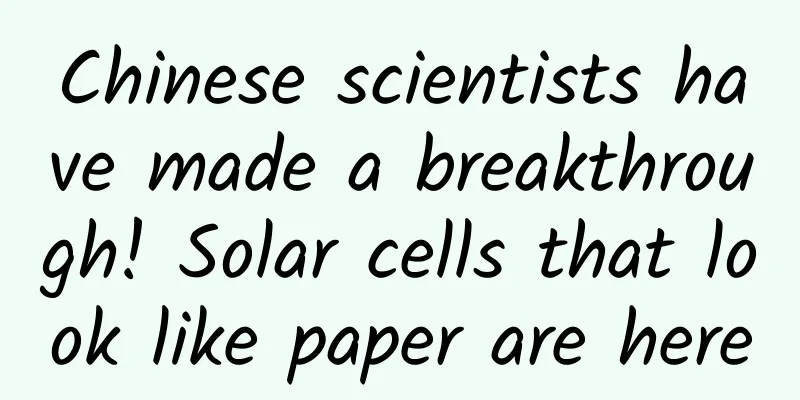Chinese scientists have made a breakthrough! Solar cells that look like paper are here

|
Ultra-thin, bendable solar cells are here! Chinese researchers have developed a technology for rounding edges. Based on this technology, they have developed flexible monocrystalline silicon solar cells that are as thin as paper, 60 microns thick, and can be bent and folded like paper. The relevant research results were published online in the journal Nature on May 24 and were selected as the cover article. Figure 1. a, The bending radius of the flexible solar cell silicon wafer is less than 5 mm; b, The bending angle of the flexible solar TV exceeds 360 degrees. Monocrystalline silicon solar cells are the fastest-growing type of solar cells. They have the advantages of long service life, perfect manufacturing process and high conversion efficiency, and are the leading products in the photovoltaic market. "Currently, the market share of monocrystalline silicon solar cells in the photovoltaic market has reached more than 95%," said Di Zengfeng, co-corresponding author of the paper and deputy director of the Shanghai Institute of Microsystem and Information Technology of the Chinese Academy of Sciences. At present, monocrystalline silicon solar cells are mainly used in distributed photovoltaic power stations and ground photovoltaic power stations. If they can be made into flexible solar cells that can be bent, they can be widely used in buildings, backpacks, tents, cars, sailboats and even airplanes, providing lightweight and clean energy for houses, various portable electronic and communication equipment, and transportation vehicles. Figure 2. Flexible monocrystalline silicon solar cell modules have been successfully applied in near-space vehicles, photovoltaic building integration, automotive photovoltaics and other fields. Liu Zhengxin, a co-corresponding author of the paper and a researcher at the Shanghai Institute of Microsystem and Information Technology of the Chinese Academy of Sciences, said that this study achieved the manufacturing of flexible monocrystalline silicon solar cells through simple process processing and verified the feasibility of mass production on the mass production line, providing a feasible technical route for the development of lightweight and flexible monocrystalline silicon solar cells. At the same time, the large-area flexible photovoltaic modules developed by the research team have been successfully applied to near-space aircraft, building photovoltaic integration, and vehicle photovoltaics. Science and Technology Daily reporter: Lu Chengkuan Image source: Official website of Shanghai Institute of Microsystem and Information Technology, Chinese Academy of Sciences |
>>: AI fraud is around the corner, how can we prevent it?
Recommend
Developing rockets and satellites and training astronauts, what is the potential for Russian-North Korean space cooperation?
Recently, Russian officials said that the Russian...
The efficacy and function of autumn maple
I wonder if you have heard of Qiu Feng. Autumn ma...
What are the effects and functions of Longli leaves?
Longli leaf is a small evergreen shrub that lives...
The efficacy and function of glandular flower tea
Traditional Chinese medicine has always been the ...
High spirits! 2021 National Day Tiananmen Square and Chang'an Avenue Flowerbed Plan Released! Sneak Peek →
On the afternoon of September 16, the Beijing Mun...
What are the effects and functions of whole Trichosanthes kirilowii
Many people may feel unfamiliar when they hear th...
What are the medicinal values of hemp seed?
Hemp seed is a good medicine for improving variou...
The efficacy and function of Huangniu tea
Speaking of Huangniu tea, many people know that i...
What is the medicinal value of Bauhinia
Some plants or flowers that we often see in life ...
The efficacy and function of inverted flowers
Nowadays, our living standards are constantly imp...
Let's learn more! Take a look at those cultural relics that are full of "time travel feeling". What's so cool about them?
Behind every rare cultural relic They all embody ...
I’m losing weight but it’s not coming off… How do I deal with the weight loss “plateau”?
Author: Cui Yihui, registered dietitian, master o...
Can the mugwort pillow be used for a long time?
Mugwort is a very important herb in life. It can ...
Is the world chaotic? Wandering between order and disorder
Yang Mingzhe Introduction: Imagine we throw a sto...
The boy's head and neck were bent 180 degrees in an instant! This area is very dangerous, don't...
Recently, Xinyang, Henan In a shopping mall A boy...




![The efficacy and function of Siegesbeckia sibiricum[picture]](/upload/images/67ca167046c47.webp)
![[Smart Farmers] Pictures of the uninvited “guest”: “Coastal Guardian” turns into “Ecological Killer”, why is Spartina alterniflora so scary?](/upload/images/67f0a90bddeae.webp)



